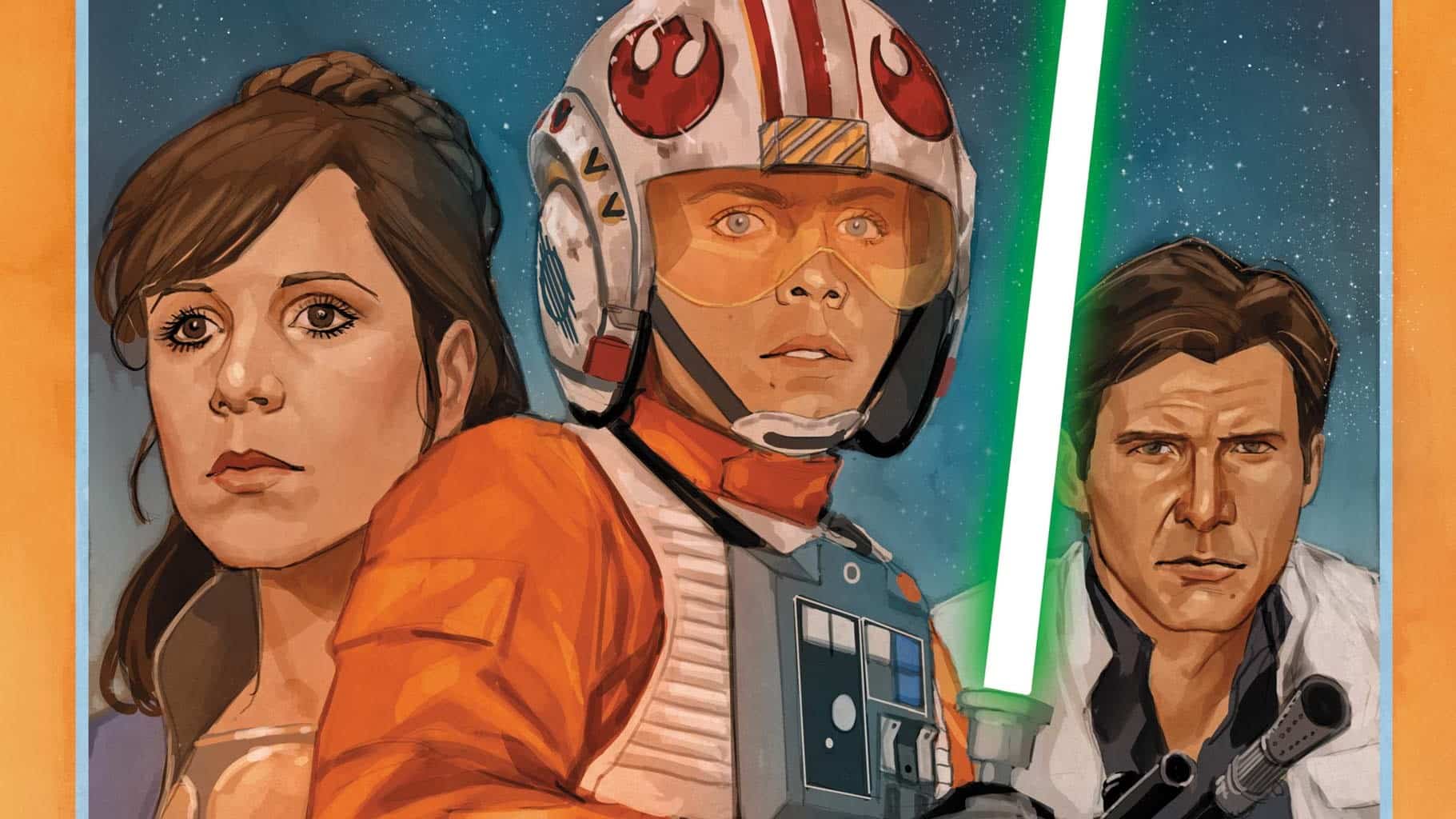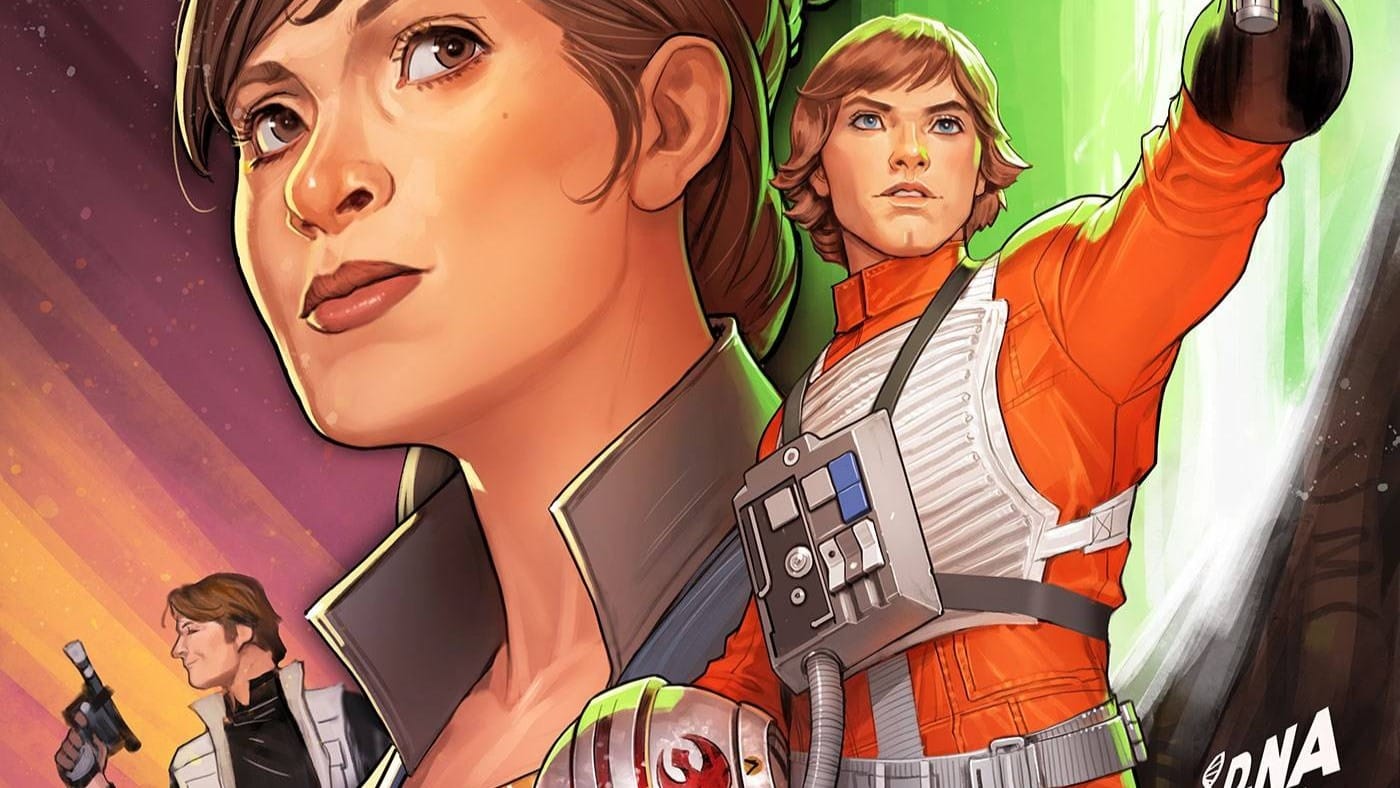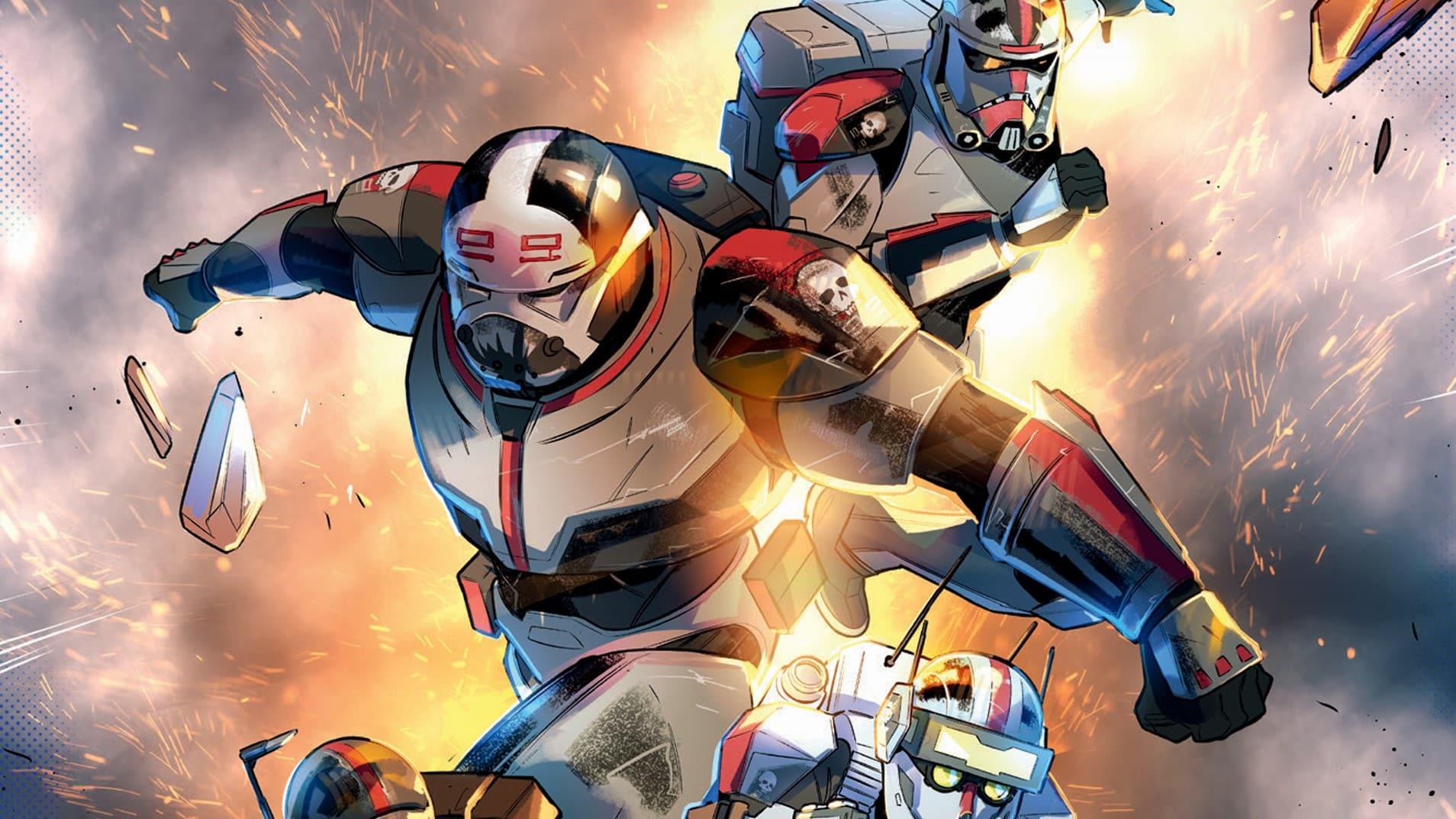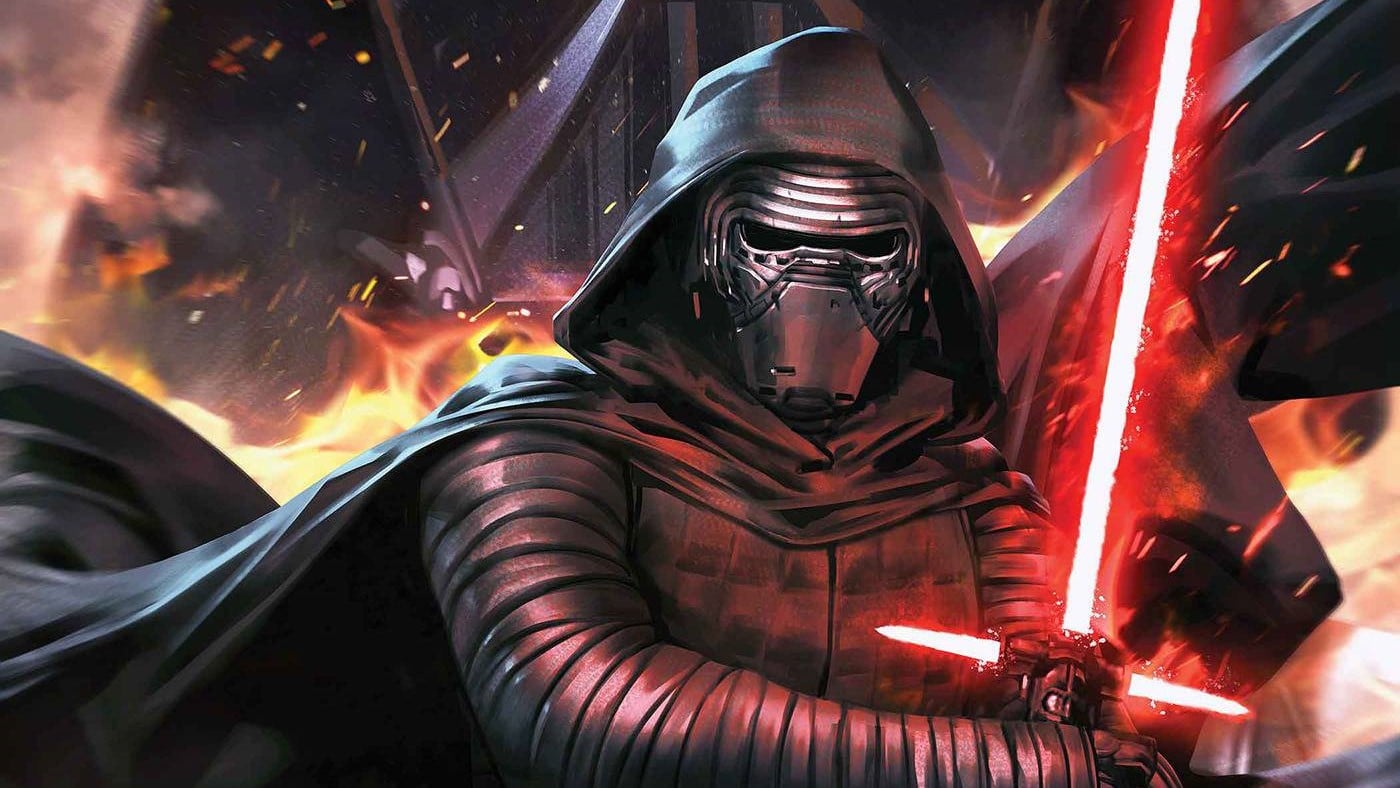A no-nonsense bounty hunter in familiar armor meets a diminutive version of a beloved Star Wars character…this time, in comic book form, in The Mandalorian #1 written by Rodney Barnes, pencils by Georges Jeanty, inks by Karl Story, colors by Rachelle Rosenberg.
The Mandalorian #1 represents the latest entry in the rich tradition of adapting Star Wars stories in comic book form. It is, in fact, a tradition which predates cinematic tellings of Star Wars stories (at least as far as audiences are concerned), with the first two issues of Marvel Comics’ original six part Star Wars adaptation arriving ahead of the release of the film in 1977. Then and now, the central questions of any such adaptations are “what purpose does it serve?” and “who is it doing it for?”
For LucasFilm in 1977, the comic book adaptation of Star Wars was intended to serve as a kind of promo for the film. The deal LucasFilm signed with Marvel for the license to make Star Wars comics required them to publish two full issues before the movie came out, in order to entice audiences and give them some idea of what to expect going into the movie, a kind of printed trailer. To modern spoilerphobes, the notion likely seems anathema, but it was a common practice back in the day: while Marvel only spoiled the first 2/6th of the story, film novelizations were usually published well before the movie they were adapting came out, and told the entire story – or at least a version of it, based on which draft of the script the writer received. Even as late as 2005, the novelization of Revenge of the Sith was published six weeks before the movie.
After the release of the movie in question, comic book adaptations of popular films (as well as things like the novelizations and, to some extent, trading cards, action figures, etc.) served a different purpose. In the days before readily-accessible home video, comic book adaptations were sometimes the only way for fans to re-experience a movie without going back to the movie theater (assuming it was still playing in one, and hadn’t left theaters and disappeared, as far as anyone knew, forever). The Star Wars comic book adaptations gave fans control: they could read it – and enter the world of Star Wars – whenever they wanted, on their terms and no one else’s. That, ultimately, is who the adaptations were for: fans who wanted to be immersed in the world of the film and revisit the story but were unable to simply watch the movie again.
The media landscape of today is vastly different. Media of all different shapes and sizes is available largely on demand. If someone wants to watch Star Wars today, they don’t need to be sated by a comic book adaptation. They can stream it on Disney+, or pop in the Blu-Ray or (for you purists), the pre-Special Edition VHS or laserdisc. Wherefore, then, the comic book adaptation? What purpose does it serve, and for whom, in the year 2022?
Those are the central questions at the heart of The Mandaloran #1, an issue which serves as a direct comic book adaptation of the Disney+ streaming series’ first episode. They are questions the issue largely fails to answer. Certainly, coming as it does, years after the debut of the episode (which, again, remains available to watch on demand, any time, via Disney+ or…other means), it serves no promotional purpose, as those early Star Wars comics did. Nor does it serve as the only available passport into the Star Wars galaxy.
Of course, comics are an entirely different medium than movies, even if both derive from a fusion of words and pictures. There are things comic books can do that movies can’t (or can do better): control the eye of the reader, speed up or slow down the passage of time, and get directly inside a character’s head. There is a way to retell a story in comic book form that is more than a simple regurgitation of the known plot beats and character moments, a way to lean into the strength of the medium to present the story in a new and unique way.
Unfortunately, that’s not really what The Mandalorian #1 does. Instead, it offers a fairly rote retelling of the first episode of the show. It doesn’t really offer any new perspectives on the story, or play with the form of the comic book to depict known action in a notable or different way. The narrative perspective remains firmly omniscient: rather than take advantage of the medium shift and passage of time (and ensuing new information about the characters involved) to tell the story from inside the head of the titular Mandalorian, readers remain at a distance from Din Djarin, watching him move through events from the outside, as in the televised series, rather than from his own first person perspective.
Penciler Georges Jeanty has experience doing this kind of adaptive work; he spent years working on Dark Horse’s continuation of Buffy the Vampire Slayer. But there, he was drawing original stories while depicting characters from another medium. Certainly here, he effectively walks the tightrope of depicting the characters like their cinematic counterparts but still in his own style: Mando’s handler Greef Carga, for example, looks like Carl Weathers, but also like a Georges Jeanty drawing. But beyond that, he largely recreates the plot beats and camera angles of the episode. Similarly, the script from Rodney Barnes doesn’t deviate from or add to the existing dialogue much, while offering little in the form of third-person omniscient or first person limited narrative captions that could have offered a deeper reflection on the plot or the character’s reactions to it.
So who is this adaptation for, then? A cynic might say, “for Marvel/LucasFilm/Disney, to make a little extra money”. For the Star Wars completionists who will buy anything Marvel publishes under the Star Wars banner. Who will want a trade collection of this series’ eight issue adaptation of The Mandalorian Season 1 to sit on their bookshelf alongside the comic book adaptations of the Original Trilogy films and the Prequels and the Timothy Zahn Thrawn novels. For bookstores and comic shops , to help round out a Mandalorian-themed display whenever another season premieres, as they attempt to cash in on the zeitgeist. Those cynics wouldn’t be wrong, per se.
But there is another reason for this adaptation to exist: nostalgia. Not for The Mandalorian, but for the form. No one needs a Mandalorian comic book adaptation to serve as a passport back into that world, but reading one might remind some people – particularly older readers – of a time when such a thing was necessary, when they were kids and didn’t have mountains of content available on demand and the only way to watch a thing again was to “watch” it in a different medium. There is a certain quaintness to comic book adaptations of modern filmed stories, and that quaintness in and of itself can be appealing, even if the actual product is humdrum and rote in the retelling, and the source material is right there, just a few clicks away.
Is that reason enough?
Not really. Anyone picking up The Mandalorian #1 hoping for something more than just a straight retelling of The Mandalorian Season 1 Episode 1, something which translates that story into comic book form by taking advantage of the form’s unique techniques and sensibilities, will likely be disappointed. If not driven by a sense of mindless completism, or in possession of certain a fondness for a very specific form of outdated storytelling, there’s simply not enough here to justify its existence.
Austin Gorton also reviews older issues of X-Men at the Real Gentlemen of Leisure website, co-hosts the A Very Special episode podcast, and likes Star Wars. He lives outside Minneapolis, where sometimes, it is not cold. Follow him @austingorton.bsky.social.






